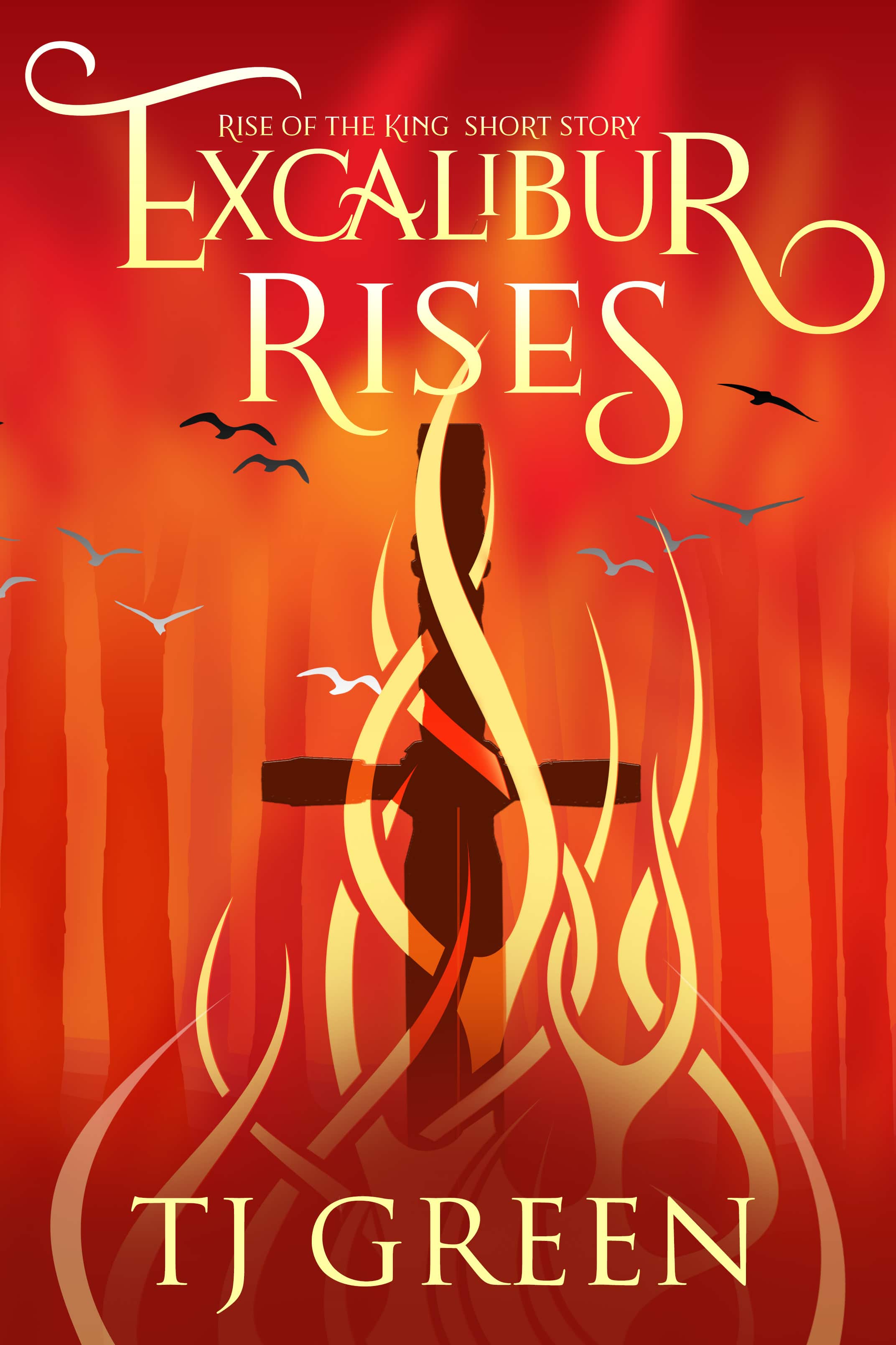
FREE Short Story
Merlin, the Lady of the Lake, and the forging of Excalibur - there's a cost to making a King.
100% Privacy Guaranteed. Witches' Honour!

Merlin, the Lady of the Lake, and the forging of Excalibur - there's a cost to making a King.
100% Privacy Guaranteed. Witches' Honour!
 Well that’s quite the loaded question. That, and did King Arthur exist at all?
Well that’s quite the loaded question. That, and did King Arthur exist at all?
The Fictional History
King Arthur’s tale is fantastical, its origins lost in time. A very brief summary is that King Arthur ruled in the 5th and/or 6th centuries in Britain, when he defended Britain against the Saxons, as the Romans had all but left Britain. He united the different leaders, and led Britain into peace. He also had a a wizard, Merlin, who advised him, a powerful sword called Excalibur that protected him, a beautiful wife called Guinevere, a castle called Camelot, and many knights who supported him. King Arthur and his knights fought battles, quested the Holy Grail, and were engaged in many other adventures, many of which involved magic, dragons and the fey.
How did the story begin?
Arthur first entered the popular imagination when Geoffrey of Monmouth wrote The History of the Kings of Britain in 1136, many years after his supposed existence. It’s fair to say that it’s a pseudo-history, and that as well as describing Arthur as a King, he also suggests that Britain was founded by a descendant of the Trojans. It is Geoffrey who describes Arthur as being the son of Uther Pendragon, and who writes of Merlin and his prophesies. He also writes that when Arthur is mortally wounded at the battle of Camlan, he is taken to Avalon for the healing of wounds. But, Geoffrey’s story was essentially political. He gave Britain a classical origin, set against the decline of the Roman Empire. Arthur stepped forward to rescue Britain from the Saxons, and was a symbol of power, which appeased the Norman rulers of Britain and gave them an origin myth.
Geoffrey’s story was only the start. It caught the imagination, and was the basis for all of the other tales that followed. In 1165 Chretien De Troyes, a Frenchman, further embellishes the story by introducing Lancelot and Camelot, and then in 1180 he introduces the Holy Grail. In 1225 the Vulgate Cycle expands the story of Arthur and the Holy Grail, but in 1470 Malory writes Le Morte d’Arthur, combining the French and Latin stories, and turns it into one cohesive whole. He has the sword in the stone, the Lady of the Lake, Excalibur, and Avalon. And what was happening when Mallory’s story was released? Henry VII, the Tudor king, was ascending the throne, and it was useful to claim a link to King Arthur through blood, to try and justify his power grab after defeating the Plantagenets, Richard III. He even named his first son King Arthur, but he unfortunately died at the age of 15.
When Caxton prints Malory’s text in 1485, the story became standardised. The edition on the left has the gorgeous artwork of Aubrey Beardsley. And so the stories continue, rising in popularity, and resurging at certain points in history, now in film as well as print.
What did Geoffrey base his stories on?
The character Arthur is mentioned in two earlier histories by William of Malmesbury and Henry of Huntingdon. And there are snippets of tales that mention Arthur in the Black Book of Camarthen, The Book of Taliesin, and the Mabinogion, (and others), and no doubt these would have been recorded from oral tales. But surely the Arthur of the dark ages was far from the Arthur described in the medieval romances.
There are many books trying to identify who Arthur really was, and where the stories take place. There seems to be general belief that Arthur was not a King, but a warlord, and a powerful leader of men. There’s an argument for Wales as the original place where Arthur lived, but of course many argue for Cornwall and Glastonbury, places which also capture the glamour of the tales – Tintagel and Glastonbury Tor. The Welsh arguments however are very persuasive, and as anyone who has been to Wales knows, the landscape is fantastic.
 |
| King Arthur statue at Tintagel. |
And now?
What can’t be doubted is the hold that King Arthur has on the English imagination. Even now there are hundreds of books still written about him, mine included, and a new film is coming out this year. And this week in the news, is the statue that has been erected in Tintagel. I love it!
It is interesting to note that he also has a hold on the British monarchy too. England’s current heirs to the throne, Prince Charles and Prince William, both have Arthur as a middle name.
Hey, I just finished the prequel and the 1st book. I loved both of them and left a review on Goodreads. I ‘m particularly interested in all Arthurian lore as I wrote my endpaper for English on the subject. Your work feels a bit like Tad Williams in style and a bit like Judith Marillier in the description of the fey (only a little as your fey are not evil or tricking humans up till now) and this is said as a compliment for I love the” descriptions of nature and surroundings! keep up the good works!
Hi Mick, thank you! Arthurian lore is fascinating isn’t it? So many stories and themes. Hope you enjoy the next two books. I read Tad William’s Memory, Sorrow and Thorn many years ago and loved it, so I take that as a great compliment. I must read Judith Marillier now!